Long Time Gone
27/03/25 07:32 Filed in: Nelson County | Shortline Railroads
The Quarry Gardens at Schuyler
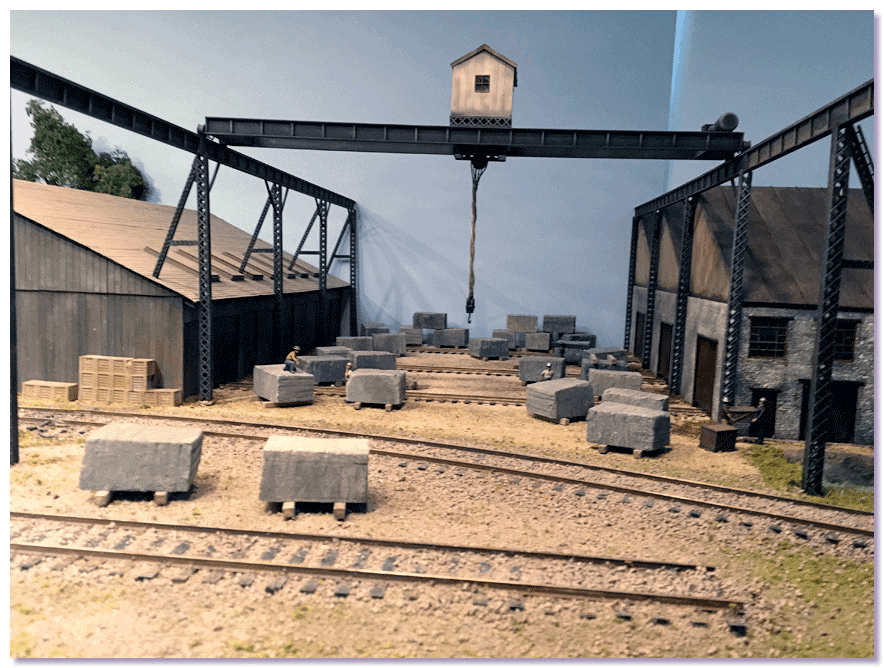
The stone yard in the Mill shadowbox
Many years ago I was involved in the development and construction of an O scale 2 rail display at the Quarry Gardens at Schuyler. The railroad display depicts the Nelson & Albemarle Railroad, which served the quarry operations in the immediate vicinity of the Gardens. The original plan was for the display to include Rockfish Depot, the mill at Schuyler, a soapstone quarry near Alberene, and Esmont shadowboxes.
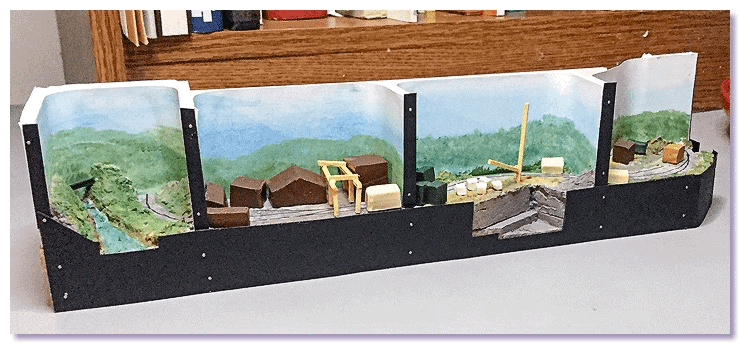
Original concept for a very large railroad display
A few years into the project Rail Tales of Charlottesville took over construction of the railroad display. I had urgent aging parent issues to deal with at that time which forced me to resign my duties at the Quarry Gardens. After my exit the decision was made to reduce the number of shadowboxes in the railroad display from four to two.
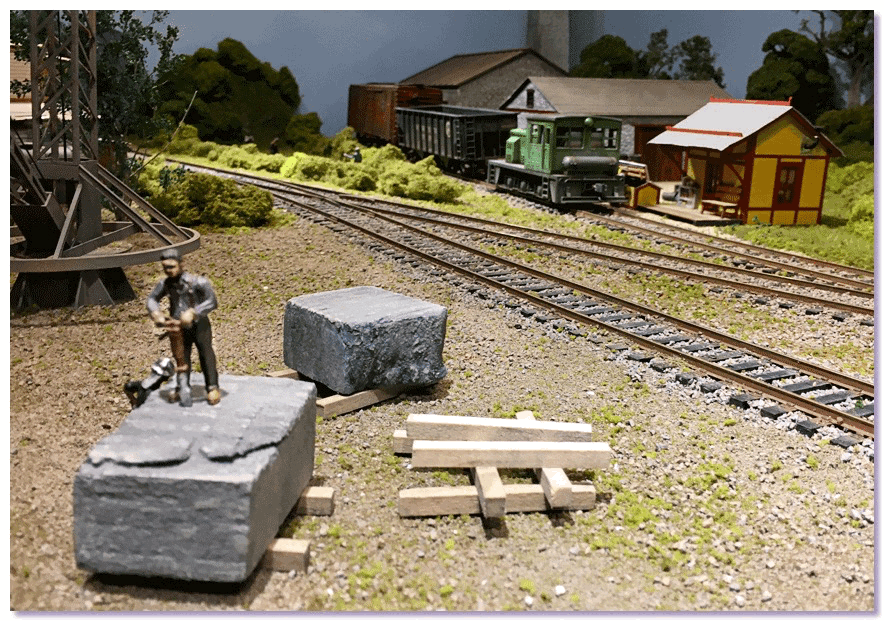
Rail Tales did an excellent job completing the construction of the railroad display. It is an interesting and attractive representation of local history.
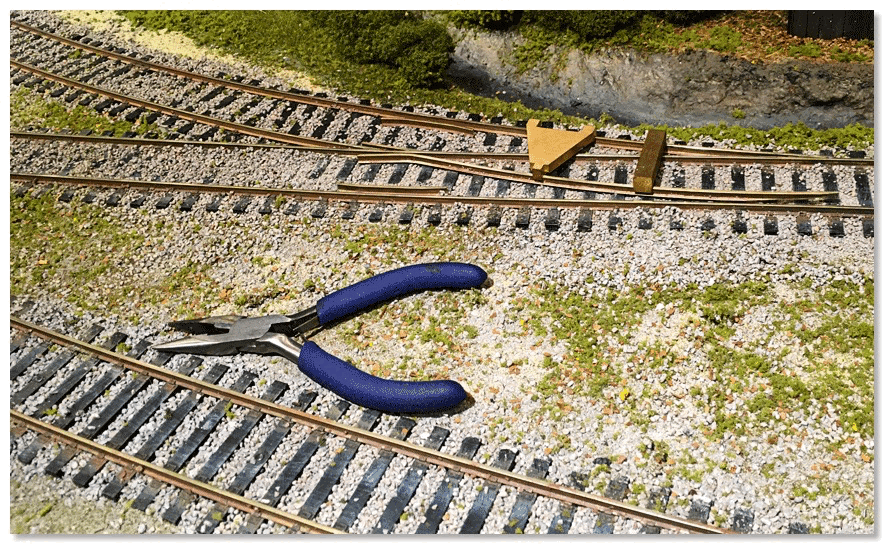
As family issues have been resolved I was able to re-establish contact with the Quarry Gardens. I am working on the railroad display once again, doing the kind of maintenance and upgrades that a working model railroad requires.
The Smoking Gun
16/03/24 08:11 Filed in: Nelson County | Soapstone in Virginia
The beginning of this saga can be found here.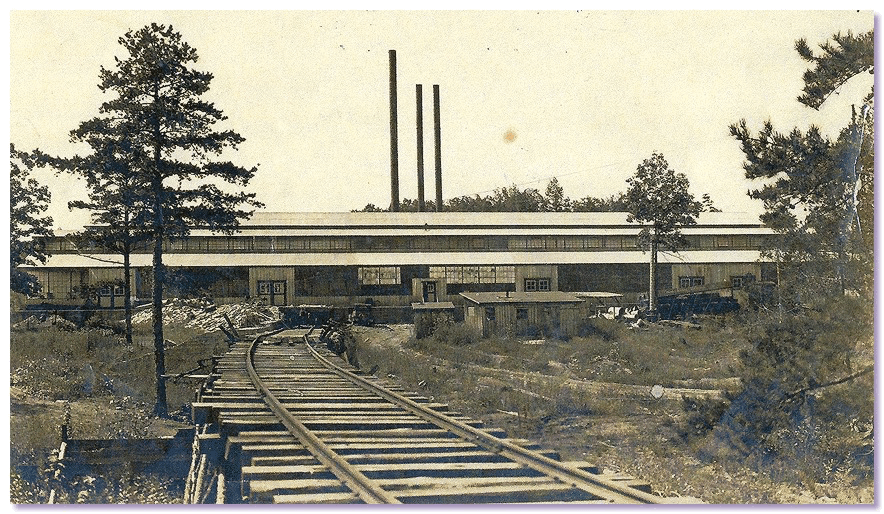 Standard gauge tracks at the Standard Soapstone plant near Phoenix in Nelson County
Standard gauge tracks at the Standard Soapstone plant near Phoenix in Nelson County
My tour of the Phoenix area with Jim, along with the old photographs he sent me from his collection, certainly verified the existence of a narrow gauge industrial railroad initially serving Phoenix Stone then Standard Soapstone. In Hearbeats of Nelson, Paul Saunders had interviewed Phoenix residents who had worked as railroad laborers laying dual gauge track.
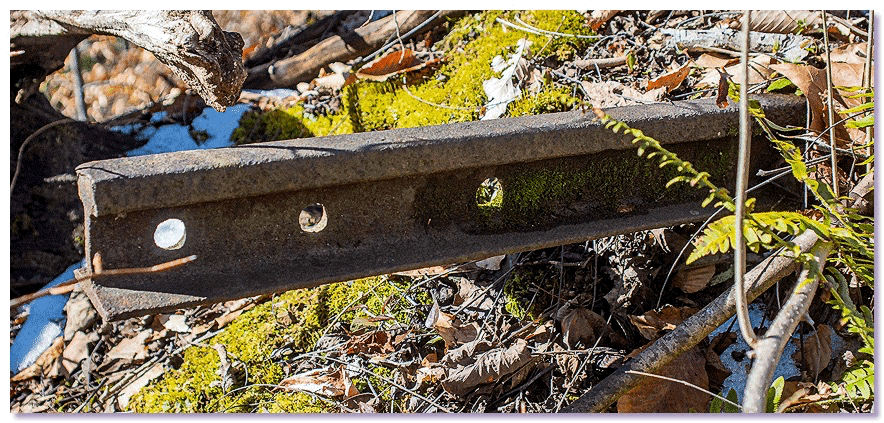
Worn scrap of light rail at an abandoned Phoenix soapstone quarry site
But I had yet to see a photograph that showed narrow gauge track beside standard gauge track in a straight forward manner that would put the entire matter to rest. And so it was to remain for years. Subsequent visits to Phoenix turned up shallow cuts and fills that may well have been part of the narrow gauge right-of-way, as well as railroad track hardware near the abandoned quarry sites.
Immediately after the Pandemic I paid a visit to Garth Groff, author of the Soapstone Shortlines book. We discussed my efforts to uncover evidence of a narrow gauge soapstone railroad. Afterwards Garth sent me exactly what I was looking for.
The Southern Railway Historical Society had published an article by E.R. Conner, III about Arrington, Virginia. Conner's article mentioned the Southern's dealings with Phoenix Stone's narrow gauge railroad. It also included the photo I had wanted to see for so long.
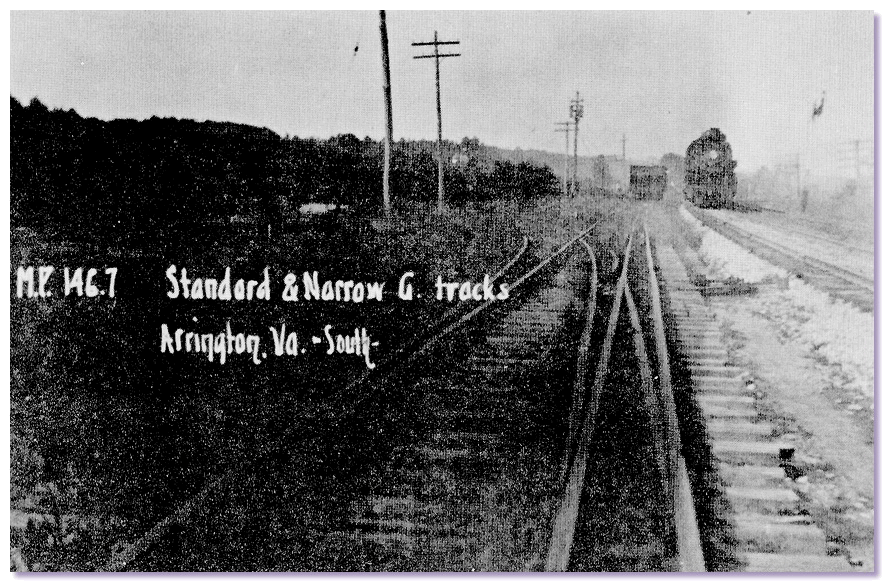
The Southern mainline is to the right, dual gauge in the center, narrow gauge track diverging off to the left

A track diagrm showing narrow gauge tracks
Garth supplied the evidence needed for me to consider this case closed. As an added bonus, he sent along a photo of a standard gauge Standard Soapstone locomotive.
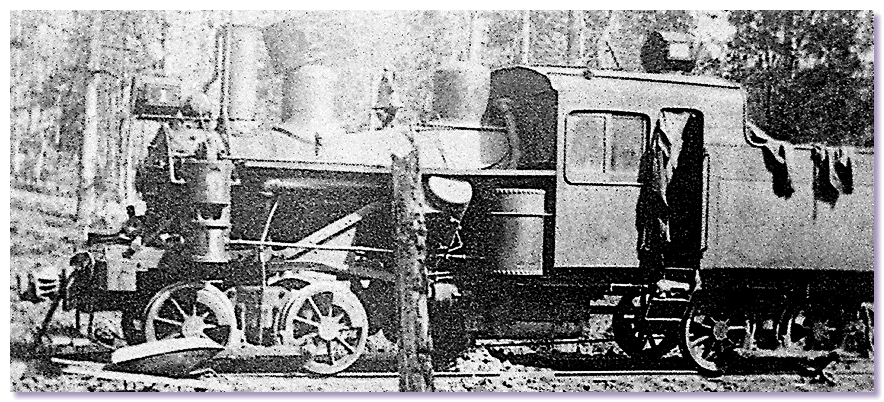
Standard gauge locomotive at the Standard Soapstone plant
This Heisler was the only steam locomotive owned by any soapstone railroad that was not a saddle tanker. Or was it? That is an investigation for another time.
More facts come to light.
 Standard gauge tracks at the Standard Soapstone plant near Phoenix in Nelson County
Standard gauge tracks at the Standard Soapstone plant near Phoenix in Nelson CountyMy tour of the Phoenix area with Jim, along with the old photographs he sent me from his collection, certainly verified the existence of a narrow gauge industrial railroad initially serving Phoenix Stone then Standard Soapstone. In Hearbeats of Nelson, Paul Saunders had interviewed Phoenix residents who had worked as railroad laborers laying dual gauge track.

Worn scrap of light rail at an abandoned Phoenix soapstone quarry site
But I had yet to see a photograph that showed narrow gauge track beside standard gauge track in a straight forward manner that would put the entire matter to rest. And so it was to remain for years. Subsequent visits to Phoenix turned up shallow cuts and fills that may well have been part of the narrow gauge right-of-way, as well as railroad track hardware near the abandoned quarry sites.
Immediately after the Pandemic I paid a visit to Garth Groff, author of the Soapstone Shortlines book. We discussed my efforts to uncover evidence of a narrow gauge soapstone railroad. Afterwards Garth sent me exactly what I was looking for.
The Southern Railway Historical Society had published an article by E.R. Conner, III about Arrington, Virginia. Conner's article mentioned the Southern's dealings with Phoenix Stone's narrow gauge railroad. It also included the photo I had wanted to see for so long.

The Southern mainline is to the right, dual gauge in the center, narrow gauge track diverging off to the left

A track diagrm showing narrow gauge tracks
Garth supplied the evidence needed for me to consider this case closed. As an added bonus, he sent along a photo of a standard gauge Standard Soapstone locomotive.

Standard gauge locomotive at the Standard Soapstone plant
This Heisler was the only steam locomotive owned by any soapstone railroad that was not a saddle tanker. Or was it? That is an investigation for another time.
Rampant Speculation
04/02/24 20:53 Filed in: Nelson County | Soapstone in Virginia
The beginning of this saga can be found here.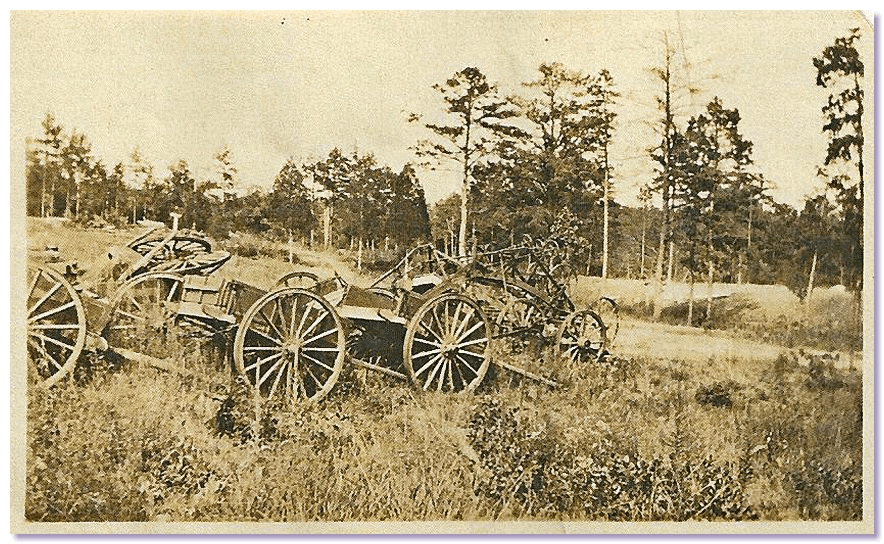
The wagons in this picture probably have been gathered and piled to be photographed for an auction catalog. It immediately brings to mind one of Jim's stories about how Phoenix soapstone would haul wagon loads of laundry sinks to the Southern Railroad's depot at Arrington.
These aren't wagons but carts, probably used for road grading. The soapstone company apparently graded and maintained the local roads using these horse drawn carts. This implies that the soapstone company was using horses, trucks, steam tractors, and trains all at the same time.
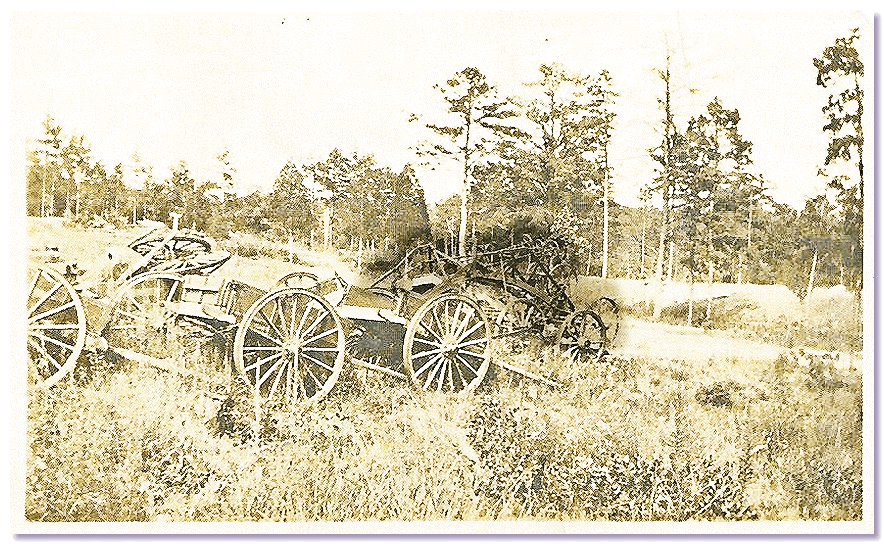
Buried in the pile of carts is a road grader which I have emphasized in this copy of the photo.
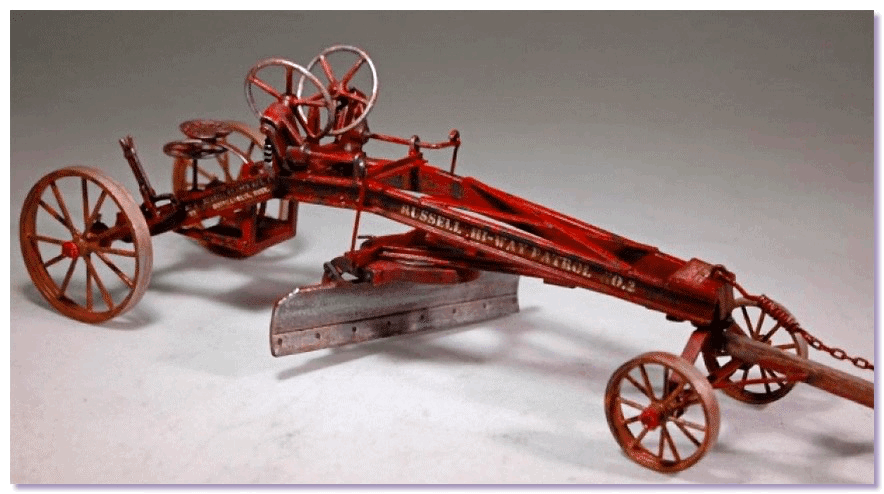
The road grader bears a strong resemblance to the O scale Russell road grader available from Wiseman Modeling Services. The grader may have been used with the carts, and was also horsedrawn.
Broken and flawed soapstone coming out of the quarries may have provided plenty of raw material for road building aggregate, but it would have to be crushed.
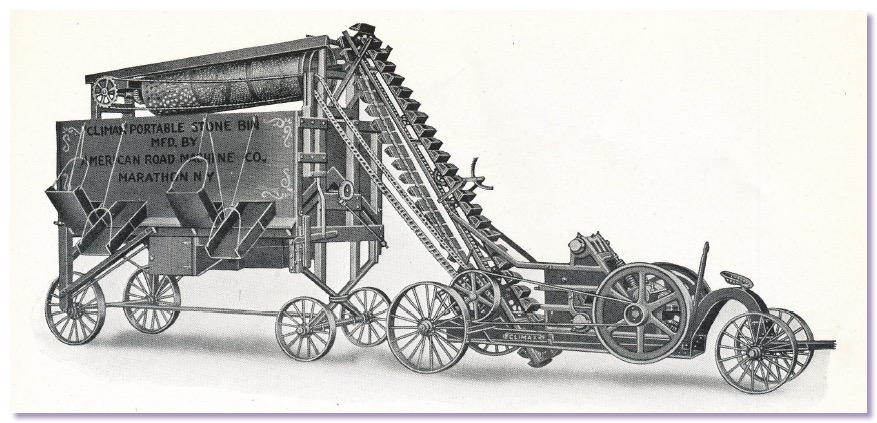
Back in the 1920s, road construction trade magazines contain ads for portable crusher/spreader outfits. Had Phoenix soapstone bought one of these contraptions?
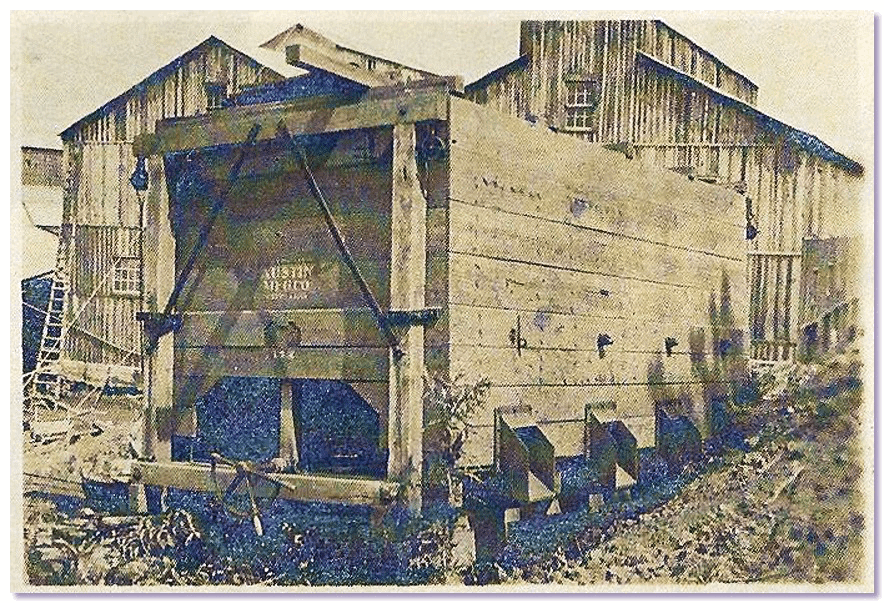
Apparently so. Here is another of Jim's old photos of items to be auctioned. This v-bottom side dump gravel hauler was most likely delivered with a crusher and bucket belt to lift the gravel into the box. Where did the crusher and bucket belt end up?
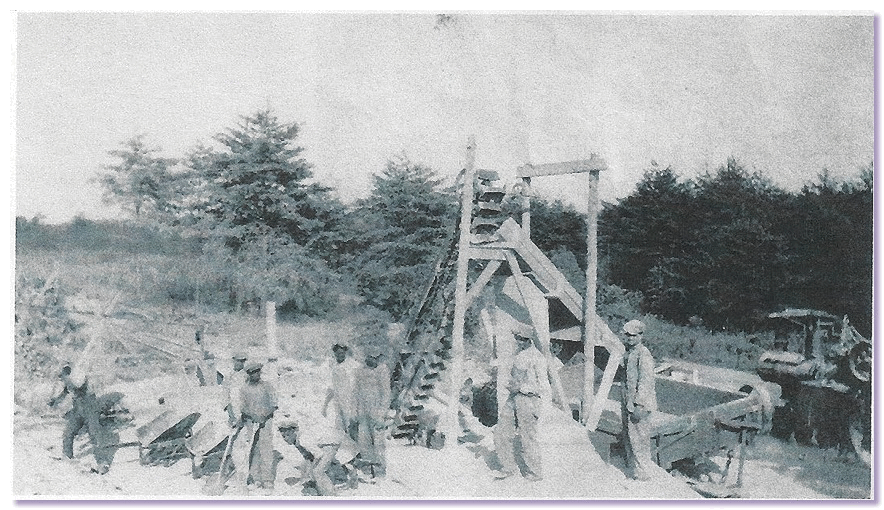
At the talc loader, of course.
Here is another photo Jim sent me.

The wagons in this picture probably have been gathered and piled to be photographed for an auction catalog. It immediately brings to mind one of Jim's stories about how Phoenix soapstone would haul wagon loads of laundry sinks to the Southern Railroad's depot at Arrington.
These aren't wagons but carts, probably used for road grading. The soapstone company apparently graded and maintained the local roads using these horse drawn carts. This implies that the soapstone company was using horses, trucks, steam tractors, and trains all at the same time.

Buried in the pile of carts is a road grader which I have emphasized in this copy of the photo.

The road grader bears a strong resemblance to the O scale Russell road grader available from Wiseman Modeling Services. The grader may have been used with the carts, and was also horsedrawn.
Broken and flawed soapstone coming out of the quarries may have provided plenty of raw material for road building aggregate, but it would have to be crushed.

Back in the 1920s, road construction trade magazines contain ads for portable crusher/spreader outfits. Had Phoenix soapstone bought one of these contraptions?

Apparently so. Here is another of Jim's old photos of items to be auctioned. This v-bottom side dump gravel hauler was most likely delivered with a crusher and bucket belt to lift the gravel into the box. Where did the crusher and bucket belt end up?

At the talc loader, of course.
What's Going On Here?
20/01/24 13:46 Filed in: Nelson County | Soapstone in Virginia
The beginning of this saga can be found here.

This photo appears in Paul Saunders' book Heartbeats of Nelson. It was taken at the Phoenix Soapstone operation. The caption identifies it as soapstone workers.
Soapstone operations in Nelson County involved cutting big blocks of stone out of quarries. It is obvious that the men in the photo are not engaged in that type of activity. They appear to be shoveling light colored dirt or sand into wheelbarrows. I believe they are working a talc deposit. Soapstone being composed primarily of talc, it would seem probable that there could be an outcropping of the mineral talc itself near the soapstone deposits. Talc is very soft and flaky, light colored with a silvery luster. Handling it leaves a glittery residue on everything it touches. There were a wide range of industrial applications for talc, making it worthwhile to extract and ship.
The men with the shovels and wheelbarrows are providing the extraction. A side dump car to the right in the photo appears to be providing the means for shipping the talc. It does not appear that the workers are dumping wheelbarrows of talc directly into the side dump car. The talc is being dumped into the car after being lifted unnecessarily high in the air with a bucket belt. The lower end of the bucket belt would probably be catching the talc after it had been milled in a crusher.
Near left center there is a vertical pole or pipe that could well be an exhaust pipe for either an internal combustion or steam engine that would drive the crusher and bucket belt. I suspect it is a steam engine because a small diameter steam line is entering the photo from the left, running toward the base of the pipe. Simple "X" shaped supports are supporting the steam line.
A steam tractor is visible just down the hillside below the side dump car. I imagine that tractor might have been used as a locomotive to get the side dump car to the talc site. It all adds up to what would be a great little scene to model, requiring a lot of research and creative solutions to represent what is not visible in the photo.
One of the old photos Jim scanned for me I found particularly interesting.

This photo appears in Paul Saunders' book Heartbeats of Nelson. It was taken at the Phoenix Soapstone operation. The caption identifies it as soapstone workers.
Soapstone operations in Nelson County involved cutting big blocks of stone out of quarries. It is obvious that the men in the photo are not engaged in that type of activity. They appear to be shoveling light colored dirt or sand into wheelbarrows. I believe they are working a talc deposit. Soapstone being composed primarily of talc, it would seem probable that there could be an outcropping of the mineral talc itself near the soapstone deposits. Talc is very soft and flaky, light colored with a silvery luster. Handling it leaves a glittery residue on everything it touches. There were a wide range of industrial applications for talc, making it worthwhile to extract and ship.
The men with the shovels and wheelbarrows are providing the extraction. A side dump car to the right in the photo appears to be providing the means for shipping the talc. It does not appear that the workers are dumping wheelbarrows of talc directly into the side dump car. The talc is being dumped into the car after being lifted unnecessarily high in the air with a bucket belt. The lower end of the bucket belt would probably be catching the talc after it had been milled in a crusher.
Near left center there is a vertical pole or pipe that could well be an exhaust pipe for either an internal combustion or steam engine that would drive the crusher and bucket belt. I suspect it is a steam engine because a small diameter steam line is entering the photo from the left, running toward the base of the pipe. Simple "X" shaped supports are supporting the steam line.
A steam tractor is visible just down the hillside below the side dump car. I imagine that tractor might have been used as a locomotive to get the side dump car to the talc site. It all adds up to what would be a great little scene to model, requiring a lot of research and creative solutions to represent what is not visible in the photo.
Narrow Gauge in the Details
05/12/23 07:47 Filed in: Nelson County | Soapstone in Virginia
The beginning of this saga can be found here.
While narrow gauge equipment was not mentioned in the auction information, careful examination of the photos Jim had of the Standard Soapstone inventory indicated it was at the site at the time the operation shut down.
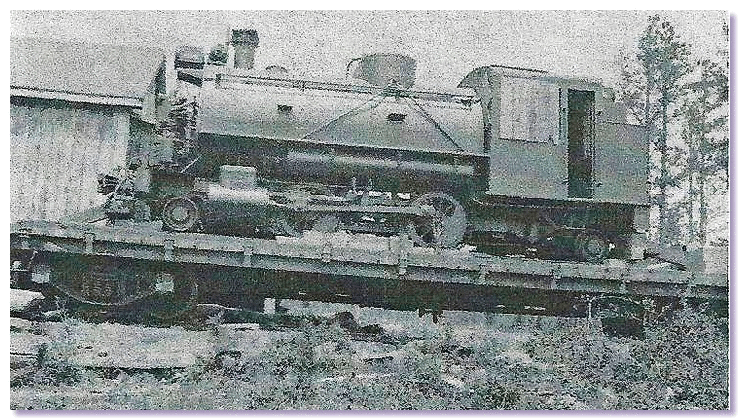
The air pumps and Jenny couplers on this saddletank locomotive indicate it is standard gauge.
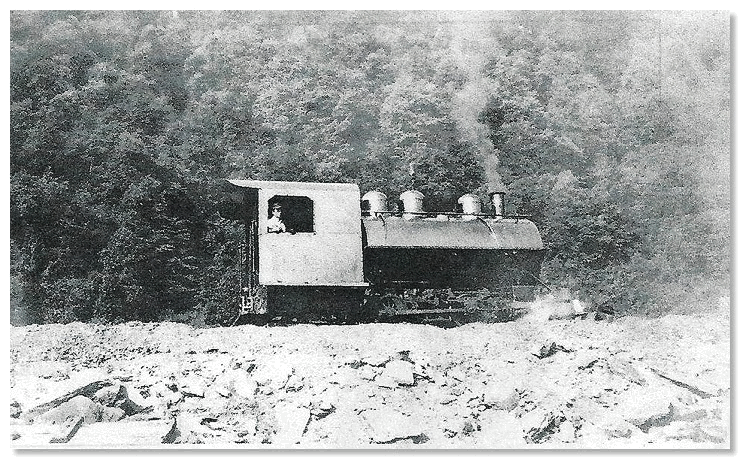
Lack of air pumps and couplers on this locomotive lead me to believe it is narrow gauge.
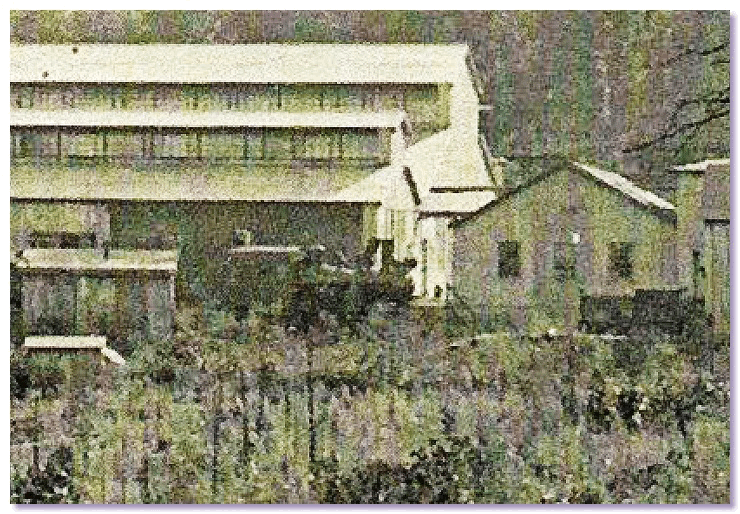
An enlarged detail of a photo of the Standard Soapstone mill after closure shows locomotives sitting in the weeds. One is a standard gauge Heisler. The boxy dark object to its right might be a Plymouth DL gas mechanical locomotive. If so, it was narrow gauge when sold to Alberene Soapstone in Schuyler where it was regauged to standard gauge.
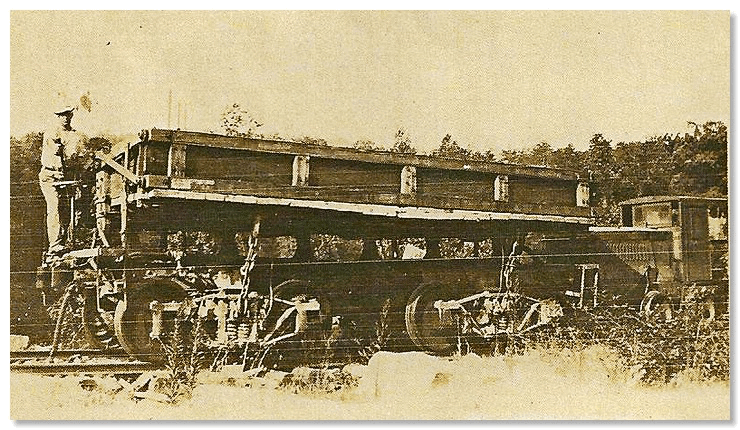
This photo may also show the narrow gauge Plymouth DL. The coupler and air line on the side dump car indicate it is standard gauge, so the Plymouth might in on a parallel narrow gauge track behind the dump car.
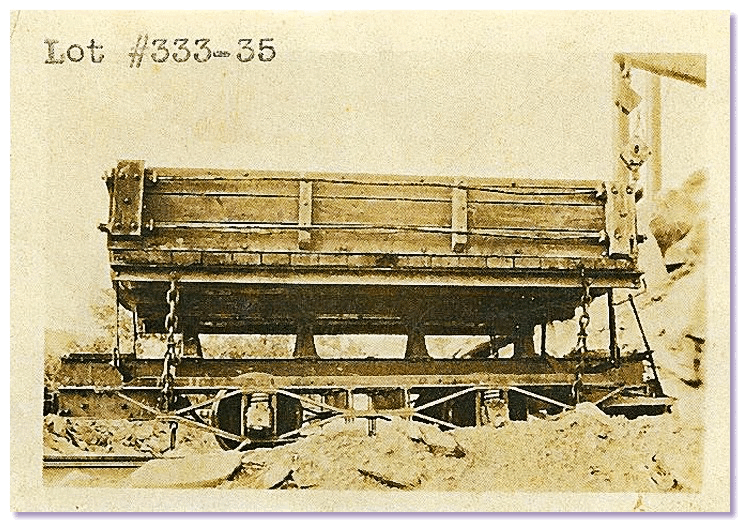
Jim had photos of various side dump cars that appear to be narrow gauge.
While narrow gauge equipment was not mentioned in the auction information, careful examination of the photos Jim had of the Standard Soapstone inventory indicated it was at the site at the time the operation shut down.

The air pumps and Jenny couplers on this saddletank locomotive indicate it is standard gauge.

Lack of air pumps and couplers on this locomotive lead me to believe it is narrow gauge.

An enlarged detail of a photo of the Standard Soapstone mill after closure shows locomotives sitting in the weeds. One is a standard gauge Heisler. The boxy dark object to its right might be a Plymouth DL gas mechanical locomotive. If so, it was narrow gauge when sold to Alberene Soapstone in Schuyler where it was regauged to standard gauge.

This photo may also show the narrow gauge Plymouth DL. The coupler and air line on the side dump car indicate it is standard gauge, so the Plymouth might in on a parallel narrow gauge track behind the dump car.

Jim had photos of various side dump cars that appear to be narrow gauge.